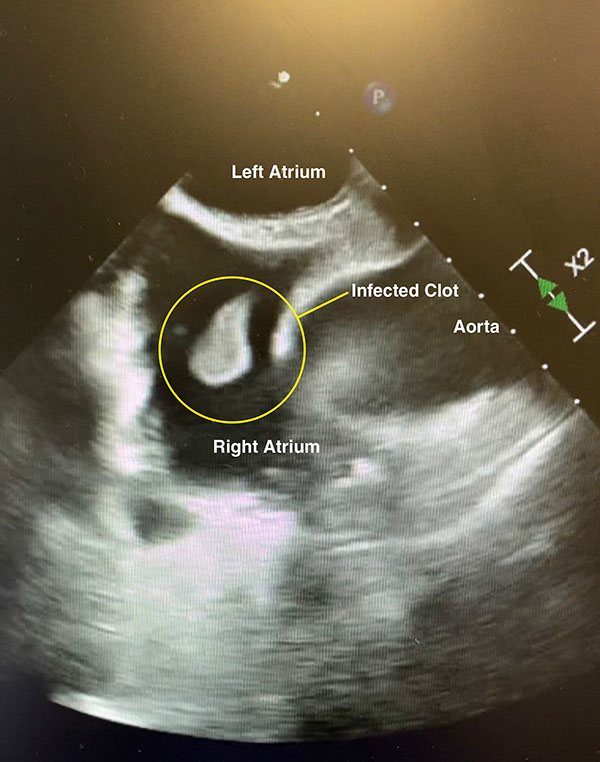A Minimally Invasive Option for Removing Infected Clots From the Heart
Author: Sherry Farney
Ahmad Munir, MD, board-certified interventional cardiologist and director of structural heart disease at McLaren Flint, has performed the region’s first right atrial thrombectomy using the latest Generation 3 AngioVac catheter technology in the hospital’s hybrid operating room.
The procedure was performed to remove an infected blood clot attached to a central venous line that was being used to administer medications. The clot extended from the tip of the line to the middle of the patient’s right atrium. This diseased clot was a continuous source of infection for the patient, leading to dissemination of bacteria and fungus throughout the body. Not addressing this would have led to septic shock as the antibiotics were ineffective against the clot.

The AngioVac thrombectomy procedure has been a major advancement in the treatment of these types of clots. The procedure is performed under general anesthesia in collaboration with cardiothoracic surgery and anesthesia.
To perform the procedure, two small, one-centimeter incisions are made either in both groins or one in the neck and the other in the groin for insertion of the AngioVac and reinfusion catheters into the body’s venous system. An echocardiography probe is placed down the patient’s throat and into the food pipe for guidance of the procedure, and intravenous blood thinners are administered. The AngioVac and reinfusion catheters are then inserted into the body and connected to a filter and a pump via tubing.
Once the pump is activated, it creates a one-way blood flow that provides suction at the tip of the AngioVac catheter for removal of the infected clot. The AngioVac catheter can be maneuvered in the heart (using imaging guidance) toward the blood clot(s).
The AngioVac catheter has a self-expanding funnel shaped, angled tip that facilitates the suction of blood clots that are trapped into the filter. The pump and the tubing circuit reinfuses the filtered blood back into the body to minimize blood loss without causing abnormal changes in blood pressure.
“The tubing circuit with the filter and pump works like a partial bypass and keeps the blood in the body clean,” said Dr. Munir. “The procedure was successful, and much better for the patient who was still recovering from a serious abdominal surgery and other health issues. She continues to do well.”
Prior to the advent of this type of catheter-based minimally invasive procedure, open-heart surgery was the only option for the removal of infected clots.
“This really is a state-of-the-art medical device that provides patients with a safe and effective way to remove infected tissue and clots in the heart without having to undergo open-heart surgery,” added Dr. Munir. “In addition, patients get the benefit of a shortened recovery time and less pain. We look forward to using this exciting technology for future patients as it has proved to be extremely effective.”
To learn more about McLaren Flint’s comprehensive cardiology program visit mclaren.org/flintheart.